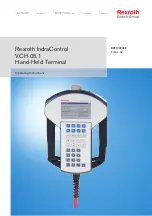
Chemical Resistance
Solvent Resistance
Autotex F157/F207 withstands exposure of more than 24 hours duration under
DIN 42 115 Part 2 to the following chemicals without visible change:
Acetonitrile
Diesel Downey / Lenor
1
Phosphoric acid (<30%)
Ajax / Vim in solution
Ethanol
Potassium ferricyanide
Alkalicarbonate solution
1
Glycerine
Potassium hydroxide
(<30%)
Ammonia (<40%)
1
Glycol
Pure Turpentine
Acetic acid (<50%)
Gumption
1
SBP 60/95
1
Ariel powder in solution
1
Hydrochloric acid (<36%)
Sulfuric acid (<10%)
Bleach
1
Linseed oil
Tomato ketchup
Castor oil
Methanol
Trichloroacetic acid
(<50%)
Caustic soda (<40%)
1
Nitric acid (<10%)
White Spirit
Cutting oil
Paraf
fi
n oil
Windex
1
Cyclohexanol
Persil powder in solution
1
Wisk
Diacetone alcohol
Petroleum spirit
1
-
1
Extremely faint glossing of the texture was noted.
Autotex withstands DIN 42 115 Part 2 exposure of up to 1 hour duration to glacial
acetic acid without visible change.
Autotex is not resistant to high pressure steam at over 100 °C or the following
chemicals:
Concentrated mineral acids
Benzyl alcohol
Concentrated caustic solution
Methylene chloride
Outdoor Use
In common with all polyester based films Autotex F157/F207 is not suitable for
use in conditions of long term exposure to direct sunlight.
4.2.2
Touch Screen Surface
The touch screen surface on the operator panel withstands exposure to the
following solvents without visible change:
Solvents
Time
Acetone
10 minutes
Isopropanol
10 minutes
Toluene
5 hours
Beijer Electronics, MAEN812E
13










































